Dear friends!
On March 5, 1944, the State Defense Committee of the USSR adopted the resolution “On measures of training command personnel of the naval fleet”: to establish higher engineering maritime schools and closed-type maritime regime schools on the basis of maritime technical schools. In order to implement this resolution, on June 7, 1944, a decree of the People’s Commissar of the Navy was issued, which proposed to reorganize maritime technical schools into higher maritime schools and create a higher maritime school in Odesa. Four specialties were opened at Odesa Higher Maritime School (OHMS): navigation, ship propulsion systems and mechanisms, ship electrical systems and mechanisms, ship radio systems. An operational group of the People’s Commissariat of the Navy (PCN) was sent to a new university, whose task was to restore, reorganize and organize the naval educational institution. They were ship specialists who had extensive experience in restoring ports and repairing vessels. Among the members of this group there was Anatolii Shved, an engineer of the technical department of the Black Sea-Azov Basin Administration, who was entrusted with the establishment of the School.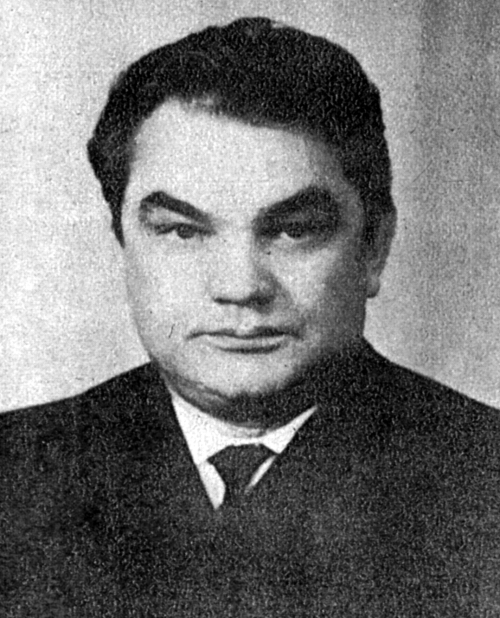 On June 20, 1944, the Candidate of Technical Sciences, an Associate Professor Volodymyr Kravchuk was appointed to the post of the Head of OHMS. At that time, he was engaged in the restoration of Zhdaniv, Novorosiysk, Rostov and Taganrog ports as a member of the operational group of the Black Sea Maritime Shipping. In July 1944, an engineer Lysenko, who previously worked at the Caspian branch of the Navy Central Scientific Research Institute, was seconded to OHMS. It was his responsibility to establish the Marine engineering faculty of OHMS.
On June 20, 1944, the Candidate of Technical Sciences, an Associate Professor Volodymyr Kravchuk was appointed to the post of the Head of OHMS. At that time, he was engaged in the restoration of Zhdaniv, Novorosiysk, Rostov and Taganrog ports as a member of the operational group of the Black Sea Maritime Shipping. In July 1944, an engineer Lysenko, who previously worked at the Caspian branch of the Navy Central Scientific Research Institute, was seconded to OHMS. It was his responsibility to establish the Marine engineering faculty of OHMS.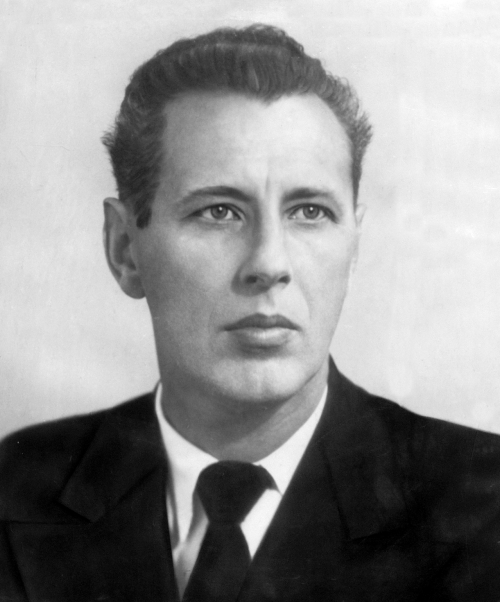 OHMS for the first time was preparing for the enrollment of cadets and the beginning of the academic year, when at the end of August 1944, the People’s Commissar of the Navy appointed the Candidate of Technical Sciences, an Associate Professor Oleksandr Miryushchenko to the position of a Deputy of the Head of the School for scientific and educational work. Under his guidance educational plans, course programs were formed; laboratories and classrooms were created, and departments were manned.
OHMS for the first time was preparing for the enrollment of cadets and the beginning of the academic year, when at the end of August 1944, the People’s Commissar of the Navy appointed the Candidate of Technical Sciences, an Associate Professor Oleksandr Miryushchenko to the position of a Deputy of the Head of the School for scientific and educational work. Under his guidance educational plans, course programs were formed; laboratories and classrooms were created, and departments were manned.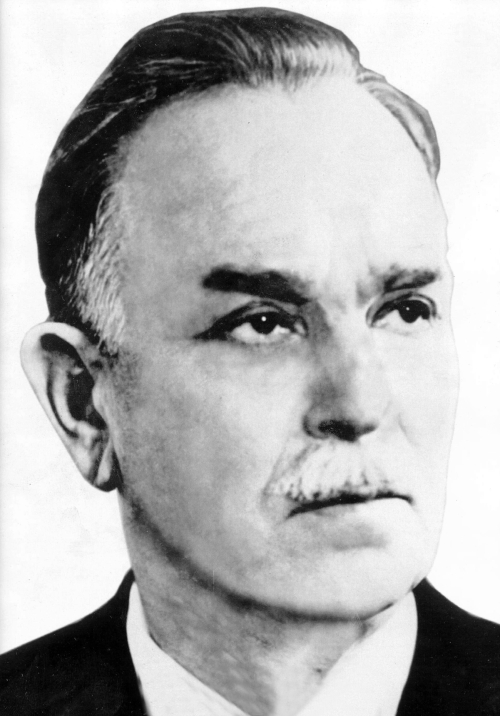 From the very first years of the School’s existence, the development of the scientific and research base was of great importance. The government resolution stated that the higher educational institution should include a department for naval training. Since 1945, it has been an organizational and marching department, a special structural division of the Faculty of Military Training. One of the primary tasks of the School was to organize on-board training – an integral part of the educational process. In May 1945, the cadets of the navigation faculty were sent to undergo on-board training on ships: first on the steamship “Adreana”, then on the passenger ship “Ukraine” (both of them were received as reparations from Romania). In January 1946, the first ship of the training fleet was acquired. The vessel “Equator”, as well as the sailing yachts “Azimut” and “Lieutenant Schmidt”, which were converted into training vessels, were received for on-board training. It was during the first post-war years, when active training of athletes of various categories, organization and participation of school cadets in competitions of various levels and profiles were carried out. In 1946, by the decree of the Committee on Higher Education under the Council of People’s Commissars, the School received the status of a third-category higher educational institution for its successful training of the specialists.
From the very first years of the School’s existence, the development of the scientific and research base was of great importance. The government resolution stated that the higher educational institution should include a department for naval training. Since 1945, it has been an organizational and marching department, a special structural division of the Faculty of Military Training. One of the primary tasks of the School was to organize on-board training – an integral part of the educational process. In May 1945, the cadets of the navigation faculty were sent to undergo on-board training on ships: first on the steamship “Adreana”, then on the passenger ship “Ukraine” (both of them were received as reparations from Romania). In January 1946, the first ship of the training fleet was acquired. The vessel “Equator”, as well as the sailing yachts “Azimut” and “Lieutenant Schmidt”, which were converted into training vessels, were received for on-board training. It was during the first post-war years, when active training of athletes of various categories, organization and participation of school cadets in competitions of various levels and profiles were carried out. In 1946, by the decree of the Committee on Higher Education under the Council of People’s Commissars, the School received the status of a third-category higher educational institution for its successful training of the specialists.
In August 1947, by the decree of the Minister of the Navy, Captain of the first rank Ivan Slepchenko was appointed to the position of the Head of Odesa Higher Maritime School. He significantly expanded the School’s capabilities: the construction of new educational buildings began, and experienced teachers were involved in the work.
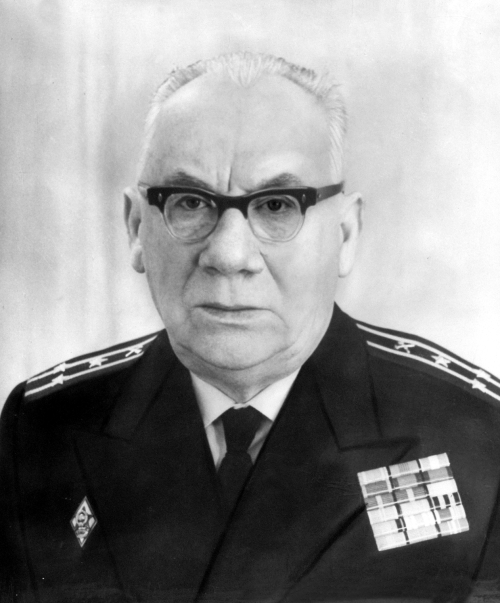 The status and prestige of the School, as well as the quality of educational and scientific work, greatly increased. Looking ahead, we should note that in 1950, the School was awarded the status of a higher educational institution of the II category, and in 1968 it got the status of the I category. OHMS was awarded the 1st degree diploma by the Exhibition of the National Economy Achievements of the USSR. In 1950 the School began training of foreign citizens. In 1958, OHMS was transformed into OHEMS – Odesa Higher Engineering Maritime School. On February 1, 1960, the part-time faculty of Odesa Higher Engineering Maritime School in Izmail was established. The 1960s can justifiably be considered the beginning of intensive development of scientific research. Scientific schools began to be formed within OHEMS. Active formation of the laboratory base of the School continues, departments are equipped with the first simulators. Construction of educational and residential buildings is underway. The medical and sanitary service was being developed at that time.
The status and prestige of the School, as well as the quality of educational and scientific work, greatly increased. Looking ahead, we should note that in 1950, the School was awarded the status of a higher educational institution of the II category, and in 1968 it got the status of the I category. OHMS was awarded the 1st degree diploma by the Exhibition of the National Economy Achievements of the USSR. In 1950 the School began training of foreign citizens. In 1958, OHMS was transformed into OHEMS – Odesa Higher Engineering Maritime School. On February 1, 1960, the part-time faculty of Odesa Higher Engineering Maritime School in Izmail was established. The 1960s can justifiably be considered the beginning of intensive development of scientific research. Scientific schools began to be formed within OHEMS. Active formation of the laboratory base of the School continues, departments are equipped with the first simulators. Construction of educational and residential buildings is underway. The medical and sanitary service was being developed at that time.
The sanitary department, which was created at the same time as the School, was intensively equipped with new medical equipment. In 1974, the Ministry of the Navy of the USSR appointed Vasyl Zalyotov, an Associate Professor, the Candidate of Technical Sciences, a graduate of the first class of the School, who was the main organizer of the work of the university for more than a quarter of a century and left a good memory for himself as the head of the OHEMS.
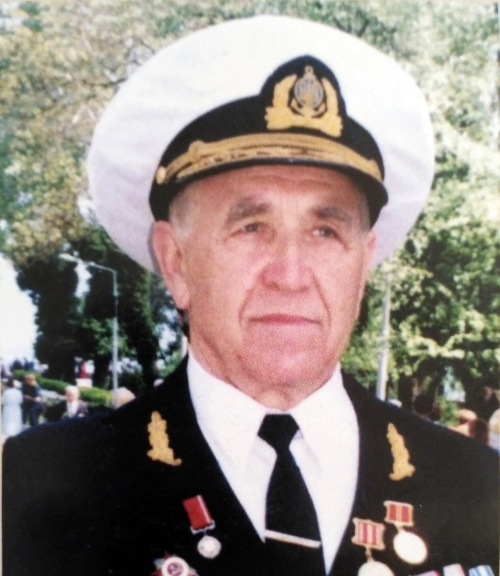
The scientific research of the scientists of OHEMS was widely implemented in production and gave a high economic effect. OHEMS scientists and teams of branch laboratories participated in the implementation of sectoral scientific and technical programs. The year 1974 witnessed a memorable o-board training of the cadets of the School, when “Comrade” together with “Kruzenshtern” took part in the international sailing regatta “Operation” Sail-74” (between Copenhagen and Gdynia) for the first time. “Comrade” was the first among large sailing ships and won the overall first place among 57 candidate vessels from 12 countries of the world. The year 1976 was also significant, when the “Comrade” took part in the transatlantic regatta “Operation” Sail-76” and was the first to cross the finish line at the roadstead of Santa Cruz de Tenerife Port. The training and sailing ship “Druzhba” made a famous voyage to the USA (1990) with OHEMS cadets and American cadets on board. Until the beginning of the 1990s, OHEMS met the international standards in terms of its educational base, teaching staff, and scientific potential. On April 26, 1991, the Cabinet of Ministers of the USSR adopted Resolution No. 207 on the transformation of Odesa Higher Engineering Maritime School named after Leninist Young Communist League (aka “Komsomol”) into Odesa State Maritime Academy (OSMA).
Fulfilling the social commissioning, OSMA reorganizes its work in accordance with new realities and becomes one of the leading universities in the country in the training of maritime personnel. In 1992 the high status of the Academy was already confirmed, when the Ministry of Education of Ukraine issued a state license for the right to train crew personnel of all levels. A scientific and methodical commission (SMC) of the Ministry of Education for Navigation and Ship Energy is created on the basis of the Academy.
From 1992, by the decree of the Minister of Defense of Ukraine, Odesa State Maritime Academy was included in the list of Higher Educational Institutions of the Ministry of Education with the military training of cadets; and corresponding departments, faculties and departments of military training were created. In accordance with the decree of the Ministry of Education and Culture dated May 25, 1993, the decision of the academic council of the academy dated dated June 30, 1994, and the Rector’s decree dated November 2, 1994, the Center for Training and Certification of Seafarers was established on the basis of the Advanced Training Faculty. The establishment of the center was connected with the adoption of International Convention on Standards of Training, Certification and Watchkeeping for Seafarers (STCW-95) in July 1995 by the International Maritime Organization (IMO). On April 5, 1993, the President of Ukraine Leonid Kravchuk visited Maritime Academy. He highly assessed the work of the academy, its educational and laboratory base, emphasized the importance and necessity of functioning of a higher educational institution of this type in Ukraine. During the existence of the School-Academy, enormous scientific and pedagogical experience was acquired. Since the second half of the 1990s, there have been more and more noticeable changes in the activities of the academy. New specialties are being opened: in 1995 the training of specialists in the field of maritime law began. On June 28, 1996, Mariupol faculty became a part of OSMA. Links are being established with the World Maritime University (Sweden) and the Institute of Marine Engineers (Great Britain). In the international sphere, the main direction of the academy’s activity was, first of all, cooperation with educational institutions of the world, maritime organizations and associations, and foreign shipping companies.
Employees of the Academy as part of the delegations of Ukraine directly participated in the work of the IMO: assemblies, committees, subcommittees. In 1994, the academy participated in “TEMPUS” educational programme. The Faculty of Humanities, together with universities in Belgium, Greece, and Portugal, developed a project and won a grant that allowed joint development with educational institutions of European countries. The activities of OSMA have were internationally recognized.
In 1996, a group of IMO experts carried out an examination of the training of crew members in OSMA. The experts highly assessed the quality of training of sea and river fleet seafarers. On July 7, 1998, by the decision of the State Accreditation Commission of Ukraine, OSMA was recognized as an educational institution certified by the IV level of accreditation. The summer of 2000 opens a new page in the history of the academy – a change of the Head of the Academy. Vasyl Zalyotov decides to resign from the post of the Rector after the expiration of the contract. The staff of the academy supported the candidacy of the Vice-rector for educational work Mykhaylo Miyusov. The Ministry of Education and Science of Ukraine appointed Mykhaylo Miyusov to the post of Rector.
 Among the main tasks of the academy within new economic conditions, there were the following ones: to increase the international prestige of the academy, expand international relations with in order to organize the practice of cadets and employment of graduates in the world’s leading shipping companies. During the years of the independence of Ukraine, OSMA has become a leading scientific and methodical center of maritime education, which defines the philosophy, strategy and ways of improving the training of seafarers in Ukraine. On September 21, 2002, the staff of the academy met the President of Ukraine Leonid Kuchma. The decree of the President of Ukraine No. 845 dated September 21, 2002 stated, “In the view of the nationwide and international recognition of the results of Odesa State Maritime Academy, its significant contribution to the development of national education and science, I rule to grant Odesa State Maritime Academy the status of national and in the future to name it Odesa National Maritime Academy …” ONMA emblem and flag were approved.
Among the main tasks of the academy within new economic conditions, there were the following ones: to increase the international prestige of the academy, expand international relations with in order to organize the practice of cadets and employment of graduates in the world’s leading shipping companies. During the years of the independence of Ukraine, OSMA has become a leading scientific and methodical center of maritime education, which defines the philosophy, strategy and ways of improving the training of seafarers in Ukraine. On September 21, 2002, the staff of the academy met the President of Ukraine Leonid Kuchma. The decree of the President of Ukraine No. 845 dated September 21, 2002 stated, “In the view of the nationwide and international recognition of the results of Odesa State Maritime Academy, its significant contribution to the development of national education and science, I rule to grant Odesa State Maritime Academy the status of national and in the future to name it Odesa National Maritime Academy …” ONMA emblem and flag were approved.
Summing up a 60-year journey, it should be noted that behind this decree there is the work of thousands of people – teachers, employees, graduates of OHMS-OHEMS-OSMA. Dozens of contracts have been concluded with shipping companies of Ukraine and other countries, seaports, agencies, and crewing companies to provide places for on-board training for all cadets of the academy. The Academy received a number of certificates, diplomas and medals for its modern educational technologies and active participation in exhibitions. The basis of the work of the Academy as a modern educational and scientific center is, first of all, the solution of current educational tasks, ensuring the proper quality of the educational process. According to the “Conceptual principles of education and professional training of ship crew members”, Ukraine is a maritime state capable of independently training highly qualified specialists for the merchant fleet. A Ukrainian seafarer on the international labor market is not only prestigious, but also economically efficient, as it contributes to the development of Ukraine’s labor resources.
By the resolution of June 4, 2014, the Faculty of Naval Forces was established at ONMA, which was later transformed into the Navy Institute of NU “OMA”. On August 25, 2015, the President of Ukraine, Petro Poroshenko, as part of the work program, visited Odessa National Maritime Academy, where a meeting was held with cadets, teaching staff and employees of the Academy. According to the Decree of the Cabinet of Ministers of Ukraine No. 623 dated June 15, 2015 and the Decree of the President of Ukraine No. 500 dated August 25, 2015, dated January 1, 2016 ONMA was reorganized by transforming it into National University “Odessa Maritime Academy” (NUOMA).



